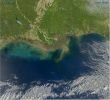If you love to travel around the world, one of these following facts about Taiga might give you much information of the place you would want to visit. Also known as boreal forest or snow forest (a biome charaterized by coniferous forests consisting mostly of pines, spruces and larches), the taiga is the world’s largest terrestrial biome. In North Americca, it covers most of inland Canada and Alaska as well of the extreme northern continental United States (northern Minnesota through the Upper Peninsula of Michigan to Upstate New York and northern New England) and is known as the Nortwoods. To get to know more about it, here are some facts about Taiga you might be interested in.
Facts about Taiga 1: Terms
A different use of the term taiga is often encountered in the English language, with “boreal forest” used in the United States and Canada to refer to only the more southerly part of the biome, with taiga used to describe the more barren areas of the northernmost part of the biome approaching the tree-line and the tundra biome.
Facts about Taiga 2: Growing Season
The growing season, when the vegetation in the taiga comes alive, is usually slightly longer than the climatic definition of summer as the plants of the boreal biome have a lower threshold to trigger growth. In Canada, Scandinavia and Finland, the growing season is often estimated by using the period of the year when the 24-hr average temperature is +5 °C (41 °F) or more.
Facts about Taiga 3: Soils
Taiga soil tends to be young and poor in nutrients. It lacks the deep, organically enriched profile present in temperate deciduous forests.The thinness of the soil is due largely to the cold, which hinders the development of soil and the ease with which plants can use its nutrients.
Facts about Taiga 4: Flora
Since North America and Asia used to be connected by the Bering land bridge, a number of animal and plant species were able to colonize both continents and are distributed throughout the taiga biome. Others differ regionally, typically with each genus having several distinct species, each occupying different regions of the taiga.
Facts about Taiga 5: Types of taige
There are two major types of taiga. The southern part is the closed canopy forest, consisting of many closely spaced trees with mossy ground cover. In clearings in the forest, shrubs and wildflowers are common, such as the fireweed. The other type is the lichen woodland and sparse taiga, with trees that are farther-spaced and lichen ground cover; the latter is common in the northernmost taiga.
Facts about Taiga 6: Fauna
The boreal forest, or taiga, supports a large range of animals. Canada’s boreal forest includes 85 species of mammals, 130 species of fish, and an estimated 32,000 species of insects.
Facts about Taiga 7: Threats
Large areas of Siberia’s taiga have been harvested for lumber since the collapse of the Soviet Union. Previously, the forest was protected by the restrictions of the Soviet Forest Ministry, but with the collapse of the Union, the restrictions regarding trade with Western nations have vanished.
Facts about Taiga 8: Insects
Recent years have seen outbreaks of insect pests in forest-destroying plagues: the spruce-bark beetle in Yukon and Alaska; the mountain pine beetle in British Columbia; the aspen-leaf miner; the larch sawfly; the spruce budworm; the spruce coneworm.
Facts about Taiga 9: Protection
Many nations are taking direct steps to protect the ecology of the taiga by prohibiting logging, mining, oil and gas production, and other forms of development. In February 2010 the Canadian government established protection for 13,000 square kilometres of boreal forest by creating a new 10,700 square kilometre park reserve in the Mealy Mountains area of eastern Canada and a 3,000 square kilometre waterway provincial park that follows alongside the Eagle River from headwaters to sea.
Facts about Taiga 10: Natural Disturbance
One of the biggest areas of research and a topic still full of unsolved questions is the recurring disturbance of fire and the role it plays in propagating the lichen woodland.The phenomenon of wildfire by lightning strike is the primary determinant of understory vegetation and because of this, it is considered to be predominant force behind community and ecosystem properties in the lichen woodland.
Hope you would find those Taiga facts really interesting and useful for your additional reading.










 www.PortlandPayday.Loans
www.PortlandPayday.Loans